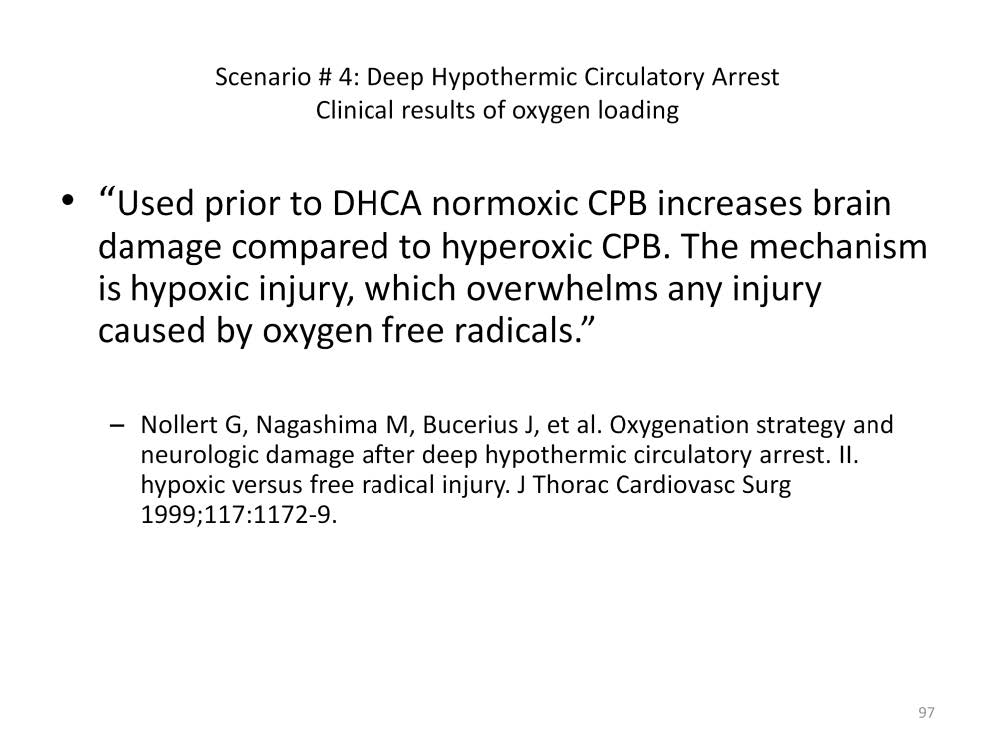
Nollert G, Nagashima M, Bucerius J, et al. Oxygenation strategy and neurologic damage after deep hypothermic circulatory arrest. II. hypoxic versus free radical injury. J Thorac Cardiovasc Surg 1999;117:1172-9.
OBJECTIVES: Laboratory studies suggest that myocardial reperfusion injury is exacerbated by free radicals when pure oxygen is used during cardiopulmonary bypass. In phase I of this study we demonstrated that normoxic perfusion during cardiopulmonary bypass does not increase the risk of microembolic brain injury so long as a membrane oxygenator with an arterial filter is used. In phase II of this study we studied the hypothesis that normoxic perfusion increases the risk of hypoxic brain injury after deep hypothermia with circulatory arrest.
METHODS: With membrane oxygenators with arterial filters, 10 piglets (8-10 kg) underwent 120 minutes of deep hypothermia and circulatory arrest at 15 degrees C, were rewarmed to 37 degrees C, and were weaned from bypass. In 5 piglets normoxia (PaO2 64-181 mm Hg) was used during cardiopulmonary bypass and in 5 hyperoxia (PaO2 400-900 mm Hg) was used. After 6 hours of reperfusion the brain was fixed for histologic evaluation. Near-infrared spectroscopy was used to monitor cerebral oxyhemoglobin and oxidized cytochrome a,a3 concentrations.
RESULTS: Histologic examination revealed a significant increase in brain damage in the normoxia group (score 12.4 versus 8.6, P =.01), especially in the neocortex and hippocampal regions. Cytochrome a,a 3 and oxyhemoglobin concentrations tended to be lower during deep hypothermia and circulatory arrest in the normoxia group (P =.16).
CONCLUSIONS: In the setting of prolonged deep hypothermia and circulatory arrest with membrane oxygenators, normoxic cardiopulmonary bypass significantly increases histologically graded brain damage with respect to hyperoxic cardiopulmonary bypass. Near-infrared spectroscopy suggests that the mechanism is hypoxic injury, which presumably overwhelms any injury caused by increased oxygen free radicals.

Perfusion Theory is an educational platform for the Oxygen Pressure Field Theory (OPFT). August Krogh’s theoretical concept of the oxygen pressure field is explained and then applied to clinical applications in perfusion practice.